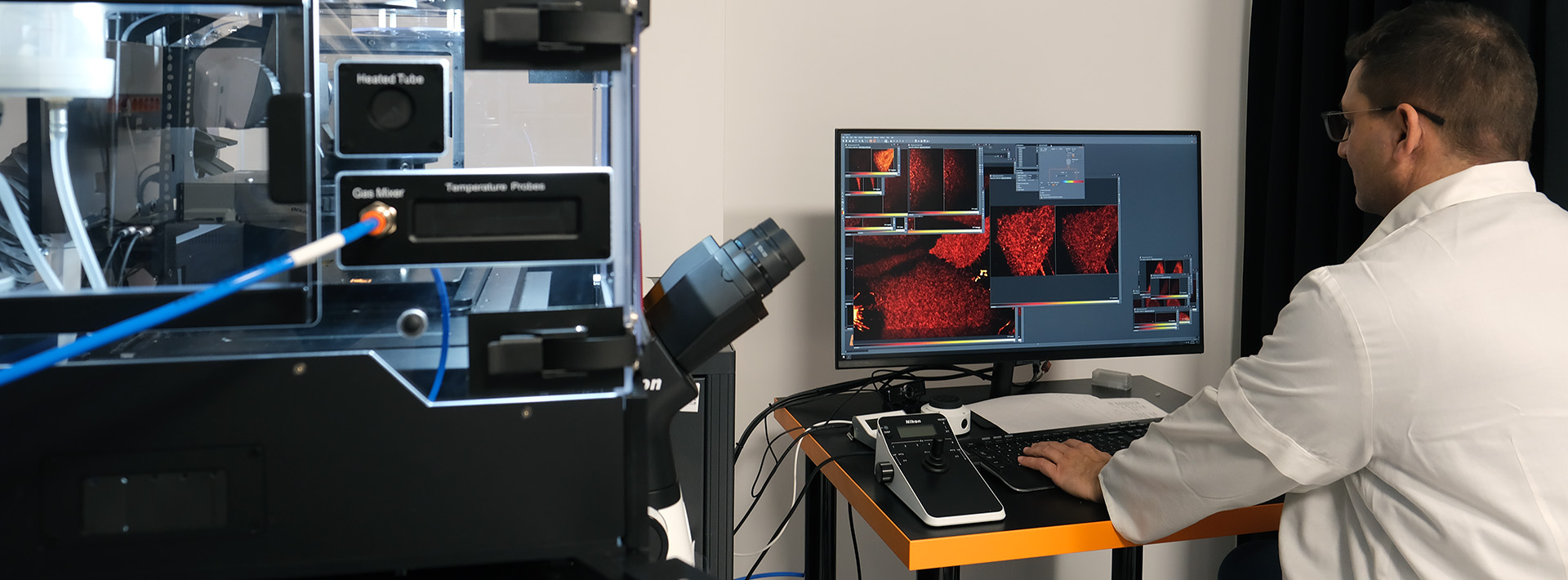
We fit a cylindrically symmetric (practically Gaussian curve) function to the two-dimensional image of a unique point source, which center returns the position of the source with great accuracy. However, fluorophores are present at high densities on labeled samples, so this method is not directly applicable. One possible solution is the temporal separation of the fluorophore signal by the STORM (STochastic Optical Reconstruction Microscopy) technique. In this case, the originally dark fluorophores are switched on before each imaging so that the function fitting can be performed without distortion. The activation - imaging steps are then repeated. The numerous steps provide a super-resolution image of the sample.
- Microscope: Nikon Eclipse Ti2-E
- Lasers: 405 nm, 488 nm, 561 nm, 647 nm
- Objectives: Plan Apo lambda 4x, Plan Apo lambda 10x, Plan Apo VC 20x, Plan Apo lambda 60x OIL, SR HP Apo TIRF 100xAC OIL
- Confocal detector: Nikon C2
- Camera: Hammamatsu Orca-Flash 4.0
